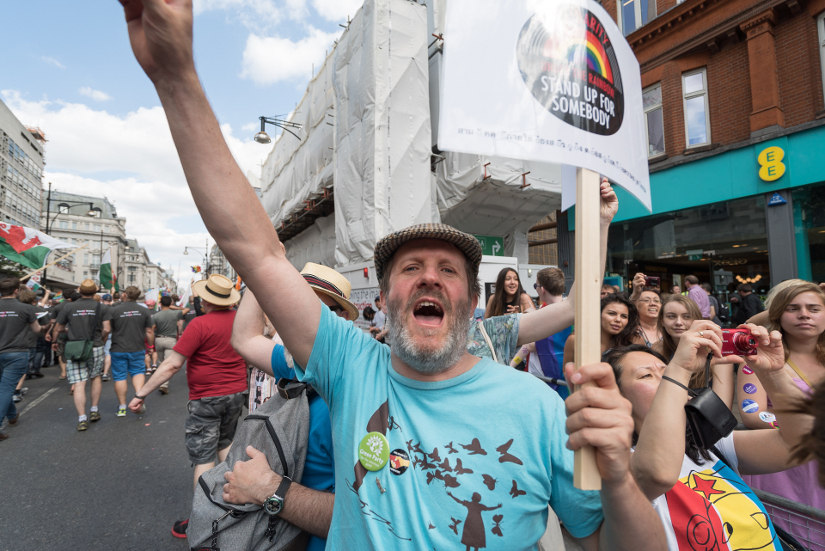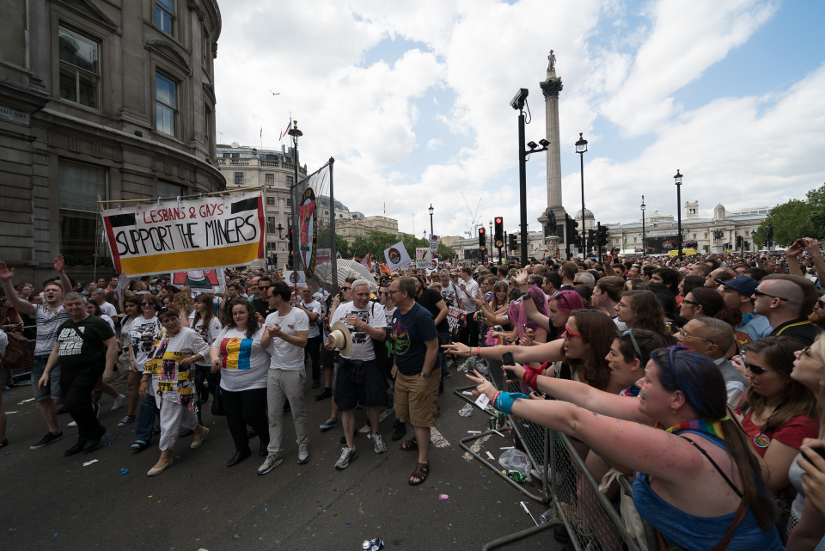
Our Story
Many of us in LGSM understood that our rights depended on the ability of wider social forces, and in particular the labour movement, to resist attacks on theirs.
Clive Bradley

Many of us in LGSM understood that our rights depended on the ability of wider social forces, and in particular the labour movement, to resist attacks on theirs.
Clive Bradley
The 2015 Pride in London Parade on 27 June was the biggest for over a decade, with 258 registered groups taking part. LGSM and the Mark Ashton Trust led the TUC contingent, supported by the Tredegar Town Band, The South Wales Gay Men’s Chorus, cast and crew from the film Pride and our friends from the former mining communities of South Wales. NUM banners from across the country followed the lead contingent and there was then a huge trade union and student presence following that.
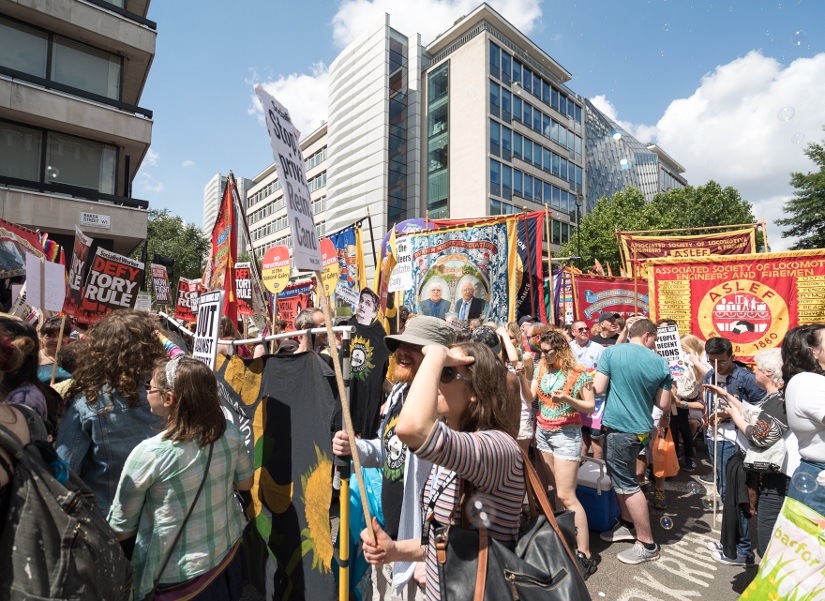
Our placards proclaimed our solidarity theme and translated this message into multiple languages. Our leaflet, distributed on the day, highlighted how far we have come and how much further we still need to go in the UK and the world. Our Pits & Perverts t-shirts were everywhere. Our contingent comprised old, young, men, women, boys, girls, black, white and all shades between and beyond, able-bodied, disabled, straight, gay, lesbian, bi and trans from across the world. We reflected every shade and degree of the LGBT and wider community. Guests from Turkey, Sweden, Germany, Italy, France & most importantly, Wales were all there. We chanted ‘Dai, your gays have arrived’ in our thousands.
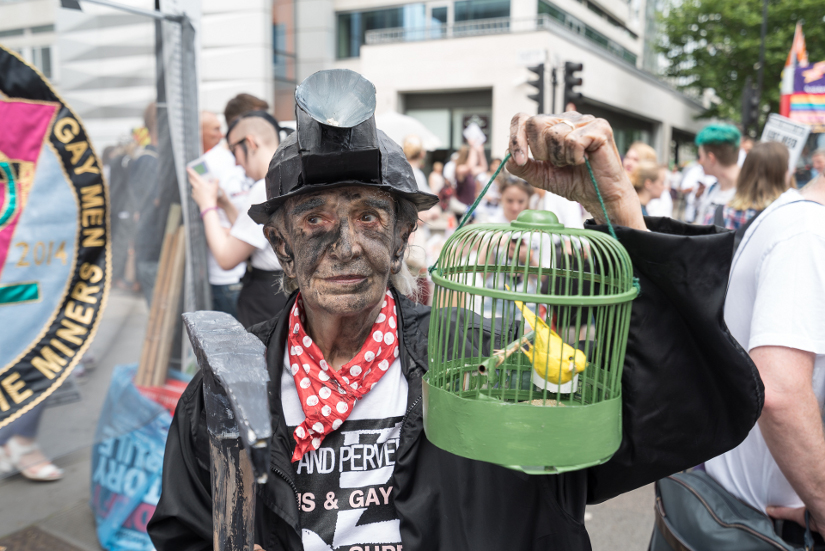
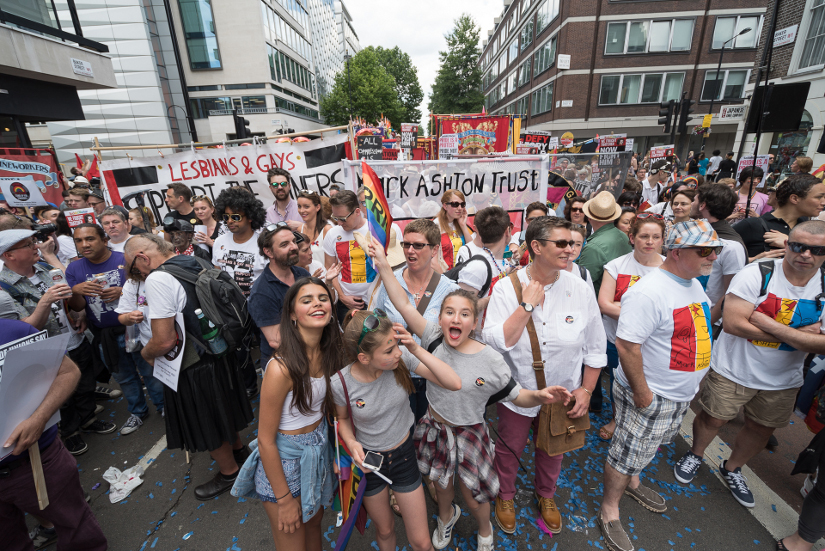
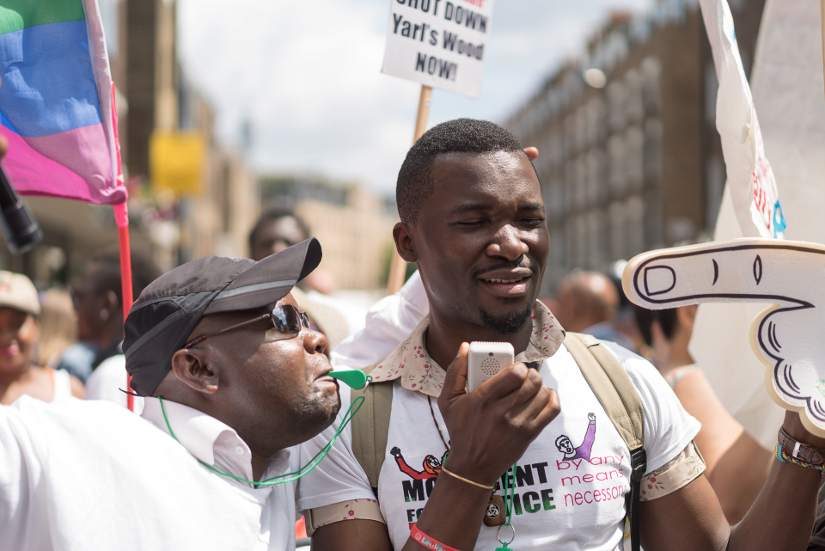
And as we progressed down Baker Street, Oxford Street, Regent Street and Haymarket, we were greeted by huge crowds of well-wishers, shoppers and tourists. Students from UAL London College of Fashion cheered us on from their balcony vantage point. As one of our members posted on Facebook ‘I wanted to capture the atmosphere and bottle it’. Well, we have done just that – our progress was filmed all the way and will appear as a short film in the very near future.
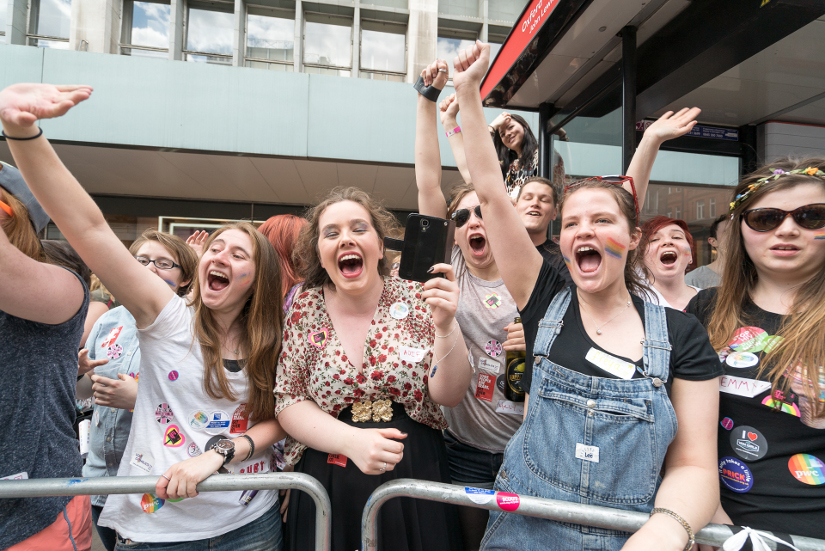
LGSM’s objectives for the Pride in London Parade were multiple – we wanted to mark the 30th anniversary of leading the 1985 Pride March with the NUM, but we also wanted to provide a focus for today’s voice of protest. And we wanted to remember those no longer with us and acknowledge their contribution to the rights we enjoy today. Pride is both a day of celebration and of protest at the way LGBT people throughout the world are treated. Whilst we have come a long way, there remains much to achieve. LGSM never wanted to be just a historical re-enactment society – we wanted to highlight just how central the support of the trade union movement has been to our right to live our lives as we wish. This debt is rarely acknowledged by the ‘leadership’ of the present day LGBT community in the UK or elsewhere. In fact, for ‘rarely’, substitute ‘never’. The trade unions have never been and will never be, fair-weather friends like some of the sponsors for this year’s Pride in London. They campaign for our rights, fight for a living wage and oppose oppressive regimes throughout the world. And their members pay their taxes and do not prop up corrupt governments and dictatorships.
The film Pride has helped us in realising these objectives, because it speaks to generations that were yet to be born when the 1984/85 miners’ strike took place. And on the same weekend that we were ‘high-fiving’ the crowds of people that lined the route of the Parade, the Istanbul police were deploying water cannons and rubber bullets on the Istanbul Pride crowds to disperse them. This provides a very graphic depiction of how much further we need to go to achieve full equality on a world scale. As does the beheading and stoning of ‘degenerates’ in present day Syria and Iraq by fundamentalists.
Our presence at the head of a trade union and student contingent of thousands would have been unimaginable 30 years ago and demonstrates just how strong these forces remain today. LGSM are humbled by our present day role and grateful to every single one of you who joined us on the Parade. Please accept our collective thanks for making the day so inspiring and so marvellous. We hope that the young people who joined us will accept our torch, just as we accepted it from those before us.
Several of those who were at the Pride in London Parade have submitted their thoughts and impressions of the day and reminiscences of past Pride marches to accompany some of the photographs taken of our progress along the route. We all hope that you enjoy these. The photos are a sample of those taken by Jun Yokoyama and we thank Jun for permission to use these.

The first Gay Pride in London (as it was called before it became first LGBT Pride and then just Gay Pride) was in 1972, ie 43 years ago. I missed the first three or four, so I guess that Saturday’s was possibly my 39th. I used to march but for the last seven years my legs haven’t been up to marching and so I have lunched with a friend or two at Balans and then walked along Brewer Street and Glasshouse Street to watch the parade come down Regent Street.
On Saturday I was accompanied by 24-year-old almost-completely-covered-from-head-to-toe-with-tattoos Jamie. Every Pride since Mark Ashton was killed by HIV in February 1987 I have worn my Mark Ashton Trust t-shirt. So it was very emotional to see both the Mark Ashton Trust banner and the LGSM banner in the parade again this year. So emotional that I could not help crying. It was a great day.
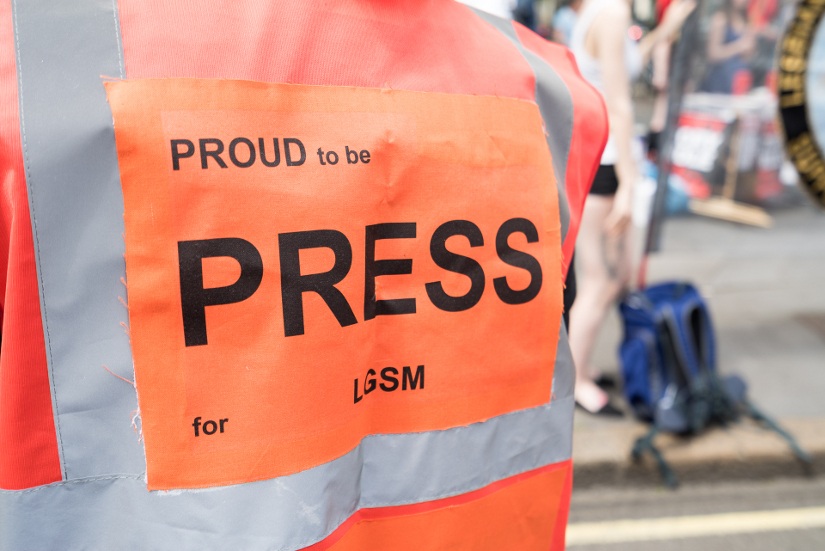
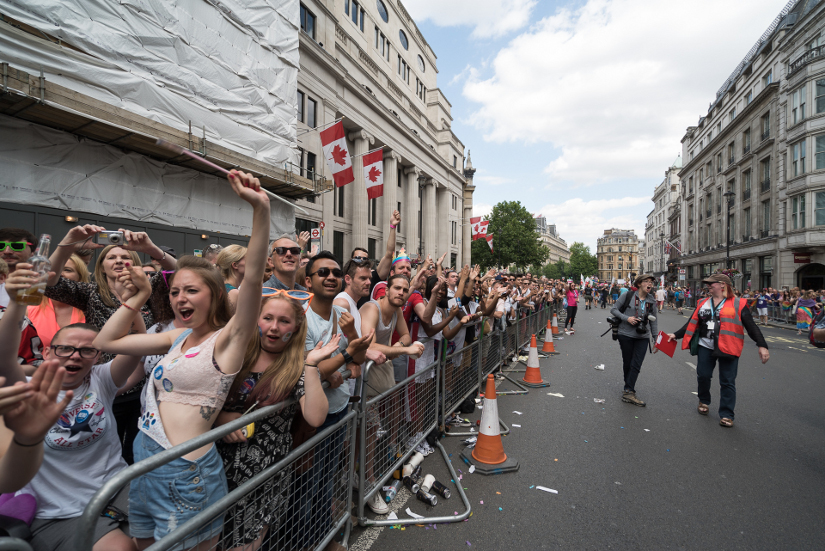
I tried to keep emotions in check on the day itself. I was LGSM’s volunteer media co-ordinator, so I was concentrating on trying to walk backwards, in front of the banner, guiding photographers and camera crew. We’d come up with the notion that we’d create a big enough gap for the crew to work safely, but also so that LGSM did seem to be the head of the parade. It worked like a dream, and witnessing LGSM and the miners’ lodge banners getting well deserved respect made my day. I’m from a pit village. By 1984, I was in Twickenham, running a Miners’ Support Group. My friend David Sillitoe and I uncovered a story on police, ‘riot training’ on Hounslow Heath, with rumours of water cannon. It wasn’t long before we saw what they’d been preparing for… A few years later, I was working on Aids campaigns under the Thatcher government. Ministers censored and banned education materials, and I dealt daily with the Sun, Mail and News of the World with their vile ‘gay plague’ tales. When some friends and colleagues died with HIV, I could never cross out their names in my contacts books. At Pride in London, a lot of those influences in my life came together. I watched that smiling, singing ‘front line’ for three happy miles; a bloc of survivors, activists, comrades of grit and determination, and people who’d helped when my home village and others in the Valleys were on their knees. I think I was fine until I saw the Fernhill miners’ banner. I got a surge of hiraeth (homesickness, longing and pride in my Valleys upbringing), and I was thankful for sunglasses and a peaked cap. It was a day full of solidarity and true comradeship. Oh, and we got the pics and film we all wanted, too. Job done.
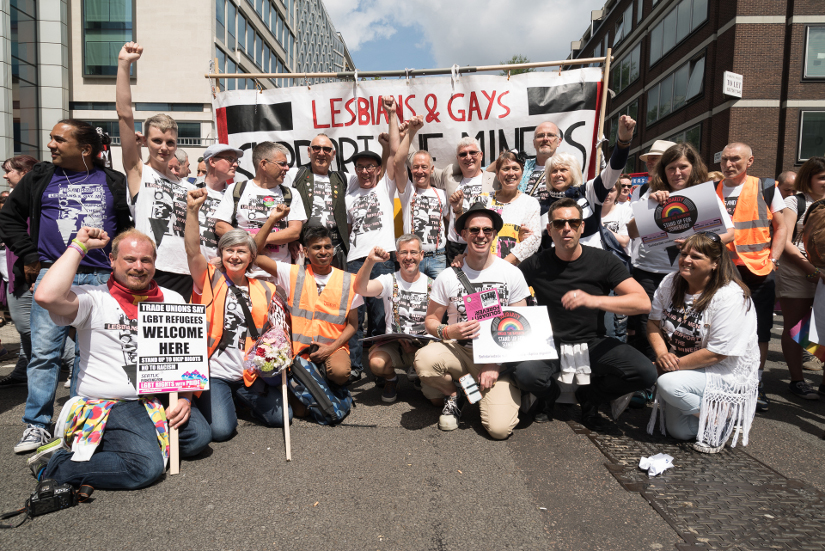
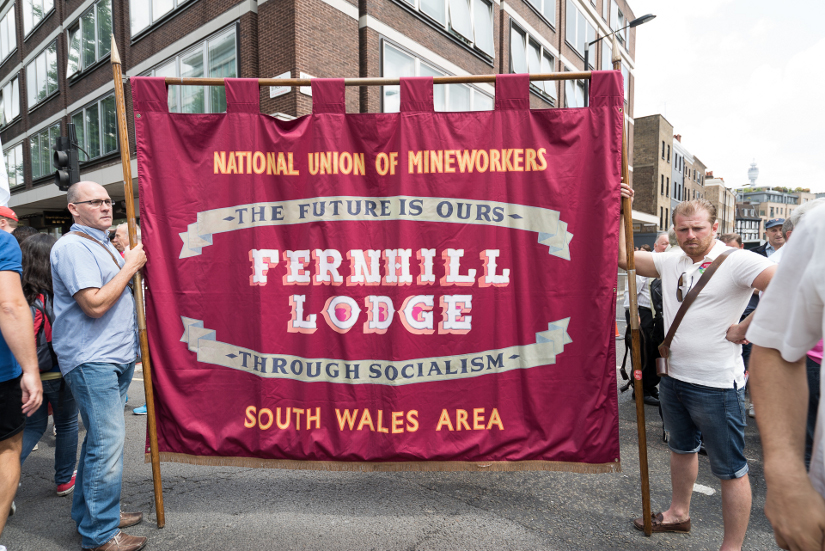
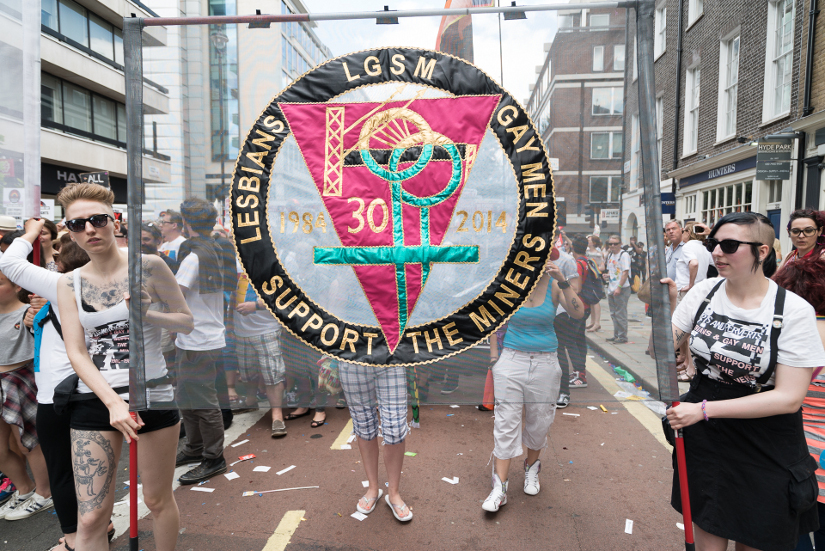
I went on my first Pride march in 1980. A few thousand people took part. I was 19, and it was still illegal for me to have sex with another man – the age of consent was 21, and remained so until 1994.
There were no anti-discrimination laws of any kind for LGBT people. Marriages between trans men and women, or between trans women and men, were invalid – they remained so until 2004. I think there were a few union banners on the march, and a presence from the revolutionary left. But there certainly weren’t any mainstream political parties.
How things have changed 35 years on. We’ve won equality across a range of civic institutions, and we’re protected against discrimination by law. Pride is now a vast celebration that brings London to a standstill.
And yet the applauding spectators that line the streets are covered with stickers advertising Channel 5, Tesco and every corporation under the sun.
Friends of mine who hadn’t come to Pride for a few years were astonished to see balloons from Unilever and little flags from Nando’s (‘worth coming out for’). Microsoft had a banner announcing that Windows 10 lets you live life in your own way, or something.
Nestling among the corporates, and despite an earlier refusal from organisers, a gaggle of UKIP supporters joined in. The stewards let them march on condition that they move away from African LGBT groups.
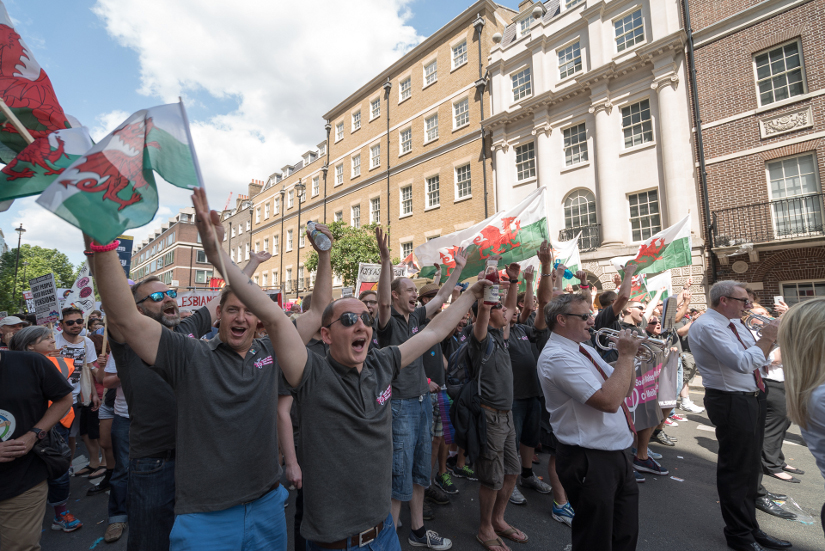
But there’s always a left presence at Pride, most of all in the form of the unions. This year that presence was boosted by members of Lesbians & Gays Support the Miners (LGSM), who led the trade union section along with the Tredegar Town Brass Band and the South Wales Gay Men’s Chorus.
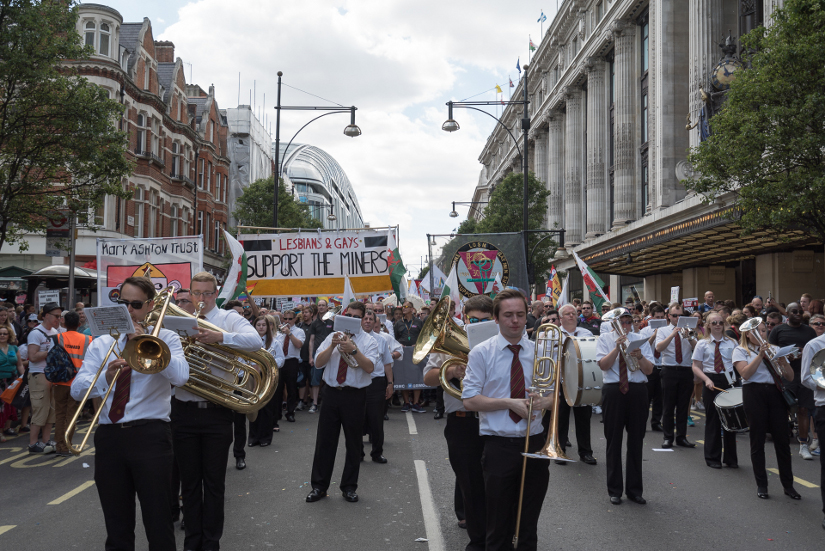
Hundreds of us had attended LGSM’s pre-Pride party the night before, where people from South Wales mingled with LGBT activists, including many who had attended last week’s TUC LGBT conference. There were tears in many eyes as we all joined together to sing ‘Bread and Roses’.

The following day saw the historic banners of the National Union of Mineworkers join the march – as they did in 1985, when miners and LGBT people were both pariahs in the eyes of Thatcher.
There was also an increased presence from union branches and trades councils. Prominent among them there were banners from National Gallery strikers, fighting privatisation and the victimisation of their union rep Candy Udwin.
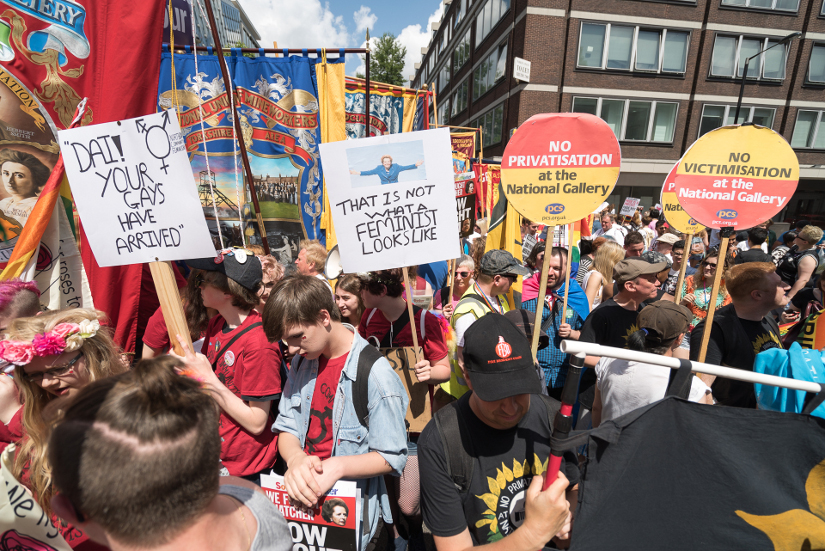
We also saw members of a younger generation, hit hard by austerity but fighting back. Workers from the Ritzy cinema in Brixton, who won a pay rise after repeated strike action with community support, marched behind a Bectu union banner.
Students from National Campaign against Fees and Cuts kept up anti-cuts and anti-racist chants all the way along the route.
Around a thousand onlookers, though covered in corporate stickers, took postcards against “pinkwashing” – Israel’s attempt to hijack LGBT liberation for propaganda purposes.
>Back in the 1980s we assumed that acceptance of LGBT people would be incompatible with capitalism. We were for the most part mistaken about this – significant changes for the better have taken place within the confines of the current system, in ways we did not expect. But I can’t help thinking we were still on to something back then. What we fought for wasn’t integration into capitalism, or a Pride march led by Barclays Bank.
We fought for a different and better world – one where social justice and solidarity were commonplace, one where sexuality and gender were liberated rather than commoditised.
In 1980 that was a vision shared by tiny numbers in an isolated movement. Now millions of people are beginning to grasp that another Pride, and another world, are possible.
I’m from Germany and a ‘newbie’ in this group. 2015 was my first pride weekend in London, after taking part in several pride marches in Germany over the years since the early 80s the participation of LGSM was a major motivation to come to Pride in London this year. I knew a little about the facts before, but the movie Pride made me hungry for more information. It also touched me deeply, it was the time of my first ‘out and about’ years back then… it was an emotional flashback.
Beside the more political pride marches in smaller German towns most of the marches in Germany do have a more celebratory character, in London I was really pleased to see the huge diversity of LGBTIQ groups, read their messages, see the cultural and sports groups, the unions as well as – most of – the political parties, the maybe a bit overwhelming visibility of the sponsoring companies and groups – but still a great combination of people standing for LGBT and social issues. I recognized how far we are standing behind in Germany, how we are sometimes lost in fights between groups, who usually want to achieve the same goals, we have to learn a lot…
Maybe it’s the fact that the grass is always greener on the other side, but I loved being here meeting a lot of awesome people at all the events, in the streets, having great discussions with strangers in cafés and a lot of fun beside the really important and mostly not amusing facts we have to point at an event like this.
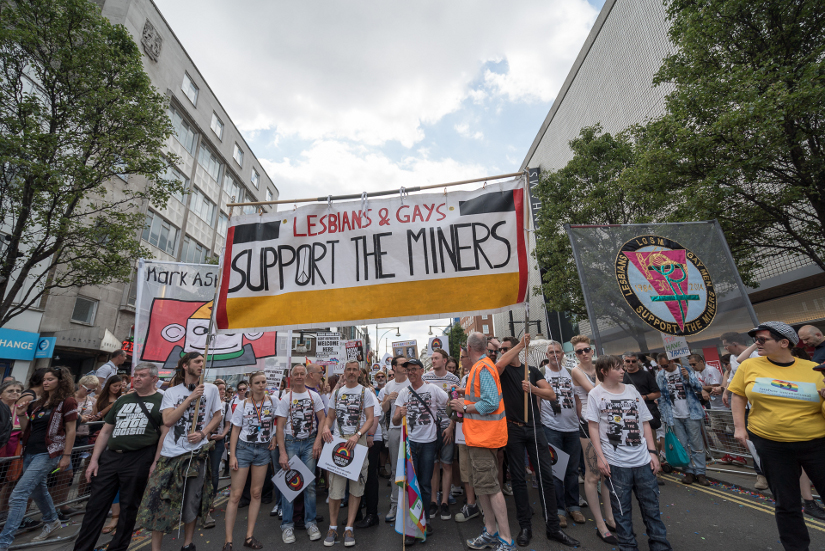
And I was so pleased and excited to meet some of the members of the group and I hope their energy and passion will motivate more and more people to stand for something, to stand for other people, to raise awareness and help to make the world free of fear, hate, violence, injustice – for lesbians, gays, trans, straights – for all the people in this wonderful world! Thanks for being there ♥ I hope I can support you from a distance.
